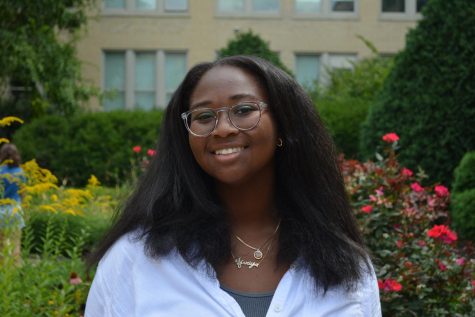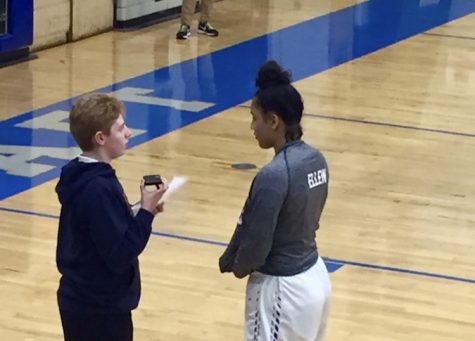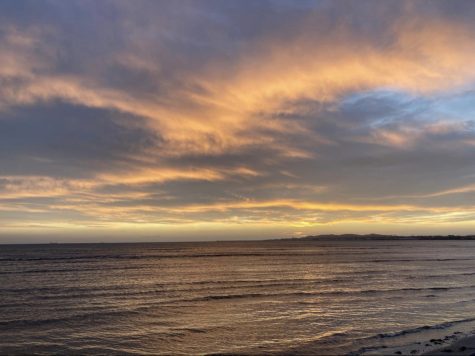Embracing Black hair: from curls to coils
Curly, straight, plaited, twisted, permed, relaxed, locked — there are many ways Black hair can be styled and worn. People of African descent or heritage can be born with a variety of hair types from wavy, curly, coily, kinky and even straight (believe it or not).
The majority of Black people, however, have some form of curly hair, and this can range from a variety of textures, with 2A texture being the loosest and 4C textured hair being the tightest.
Thanks to the vast types of hair that present themselves in those of African descent, many cultures such as the Fulani tribe in West Africa and the Himba tribe in Namibia, have developed their own hairstyles and traditions centered around the importance and beauty of Black hair.
Specifically in Africa, many tribes have traditional hairstyles which have major cultural significance relating to someone’s social status, family lineage or tribe they belong to. This deeper cultural use of hair continued across the Atlantic Ocean where enslaved Africans used hairstyles, such as cornrows, in order to create maps and hide grains of rice to aid in the escape of enslaved women to freedom.
Today, hair still holds a major role in the culture of Black people all over the world, especially for the Black population within this country. Many African-Americans are descendants of enslaved Africans, and due to the atrocities of slavery, almost all of these descendants, including myself, have no exact ties to our African ancestry and feel a great loss of identity as a result.
The strongest trait that ties African-Americans back to our African ancestors are our physical features and, most importantly, our hair. For decades Black people were forced to assimilate into European beauty standards with Black hair being deemed “unprofessional,” “ghetto” or “ugly.” However, a cultural resurgence of black hair in the 1960s-70s through the Natural Hair Movement has led to a renaissance of Black identity and haircare.
For a while though, after the first Natural Hair Movement of the 60s/70s, straight hair and perms came back in style within popular and Black culture. This led to many years of perms and silk presses up until the mid 2010s. Around 2015, the Natural Hair Movement came back in full spring, this time with more resources and products available to the masses in order to support them on their “natural hair journey.”
Black people across America are finally embracing their natural hair and experimenting with traditional African hairstyles. This recent interest in Black hair has thus created an outlet for Black men and women to express themselves and emphasize our identity, ancestry and heritage all at once – especially for American descendants of slaves (ADOS).
However, even though natural hair has had a strong resurgence, a lot of Black people — especially Black women — still struggle to feel beautiful and confident in their hair. After decades of being told to straighten, relax or cut our hair, it’s truthfully hard learning to embrace the uniqueness and charm of Black hair.
Before the natural hair care market boom around 2015, it wasn’t uncommon for many young Black girls to have their hair relaxed or straightened often with a hot comb. Our mothers and grandmothers grew up in a culture where relaxed and straight hair was seen as ’professional’ and overall more attractive.
Trying to appeal to eurocentric beauty standards that have no inclusivity towards Black people is a dilemma Black people have faced for ages. Growing up and learning to be comfortable in your own skin is a struggle many Black kids will have to face. My friends and I often discuss how we struggled with feeling ‘adequate’ enough for our white peers, especially when it came to middle school/high school crushes and self-confidence.
Even scrolling through social media, especially TikTok, other Black content creators weave a similar story, sharing how they often felt left out or pushed to the side in favor of their non-Black peers in middle school, high school and even college due to their physical features — and the stereotypes that have been placed upon Black people.
Though Black culture places an emphasis on being strong and persistent in the face of oppression, being a Black teenager — especially when people that look like you only make up 7.9% of Lane’s student body — can be challenging and frustrating at times.
Though the beauty standards are unlikely to change anytime soon, the one thing that has constantly been evolving is the acceptance and appreciation of Black culture and identity within the Black community.
From allowing unattainable beauty standards and racism to define our outlook on hair, to finally embracing the way our hair naturally grows and the sheer capability and power it holds: Black hair has come an extraordinarily long way.
With mainstream media finally catching on to this cultural movement, we now have online videos by major media outlets on how to get the ‘perfect wash-n-go’ and even tutorials on different braided hairstyles, along with many articles on the history of Black hair.
It may take a long time for Black features and specifically Black hair to truly be celebrated and deemed ‘beautiful’ by the world, especially white society, but frankly that’s okay. What matters the most is that we have learned as a race that ‘BLACK IS BEAUTIFUL,’ and how truly special everything from our skin to the extravagant crowns on our heads are.
Your donations directly fund the Lane Tech student journalism program—covering essential costs like website hosting and technology not supported by our school or district. Your generosity empowers our student reporters to investigate, write, and publish impactful stories that matter to our school community.
This website is more than a publishing platform—it's an archive, a research tool, and a source of truth. Every dollar helps us preserve and grow this resource so future students can learn from and build on the work being done today.
Thank you for supporting the next generation of journalists at Lane Tech College Prep!

Yaniya is a senior at Lane and is a member of the Omega Program. This is Yaniya’s second year at The Champion. Yaniya participated in the Princeton Summer...





